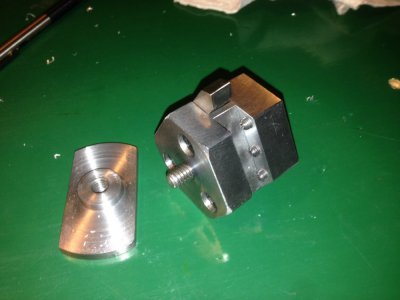- Joined
- Sep 5, 2013
- Messages
- 3,786
Bill- I don't think I'd have a problem building that the way you're proposing either. I made a tool block in exactly the same manner and for exactly the same reasons (no mill, marginal welding capabilities) and it's held up well. I would likely make two changes though: I don't think I'd use glue. For one, I always like to be able to take things apart later if I can, and for another, the glue (unless it is extremely hard) will likely be softer than the mating steel which can in some cases contribute to "wiggling" rather than prevent it. I would also try to run a pair of screws side by side if room allows rather than just a single row. I realize your sketch is more concept than build sheet, so perhaps you've already thought of that.
I do like the dowels as Jim suggested, because they fit so snugly they can stop a lot of shifting from getting started.
-frank

I do like the dowels as Jim suggested, because they fit so snugly they can stop a lot of shifting from getting started.
-frank

